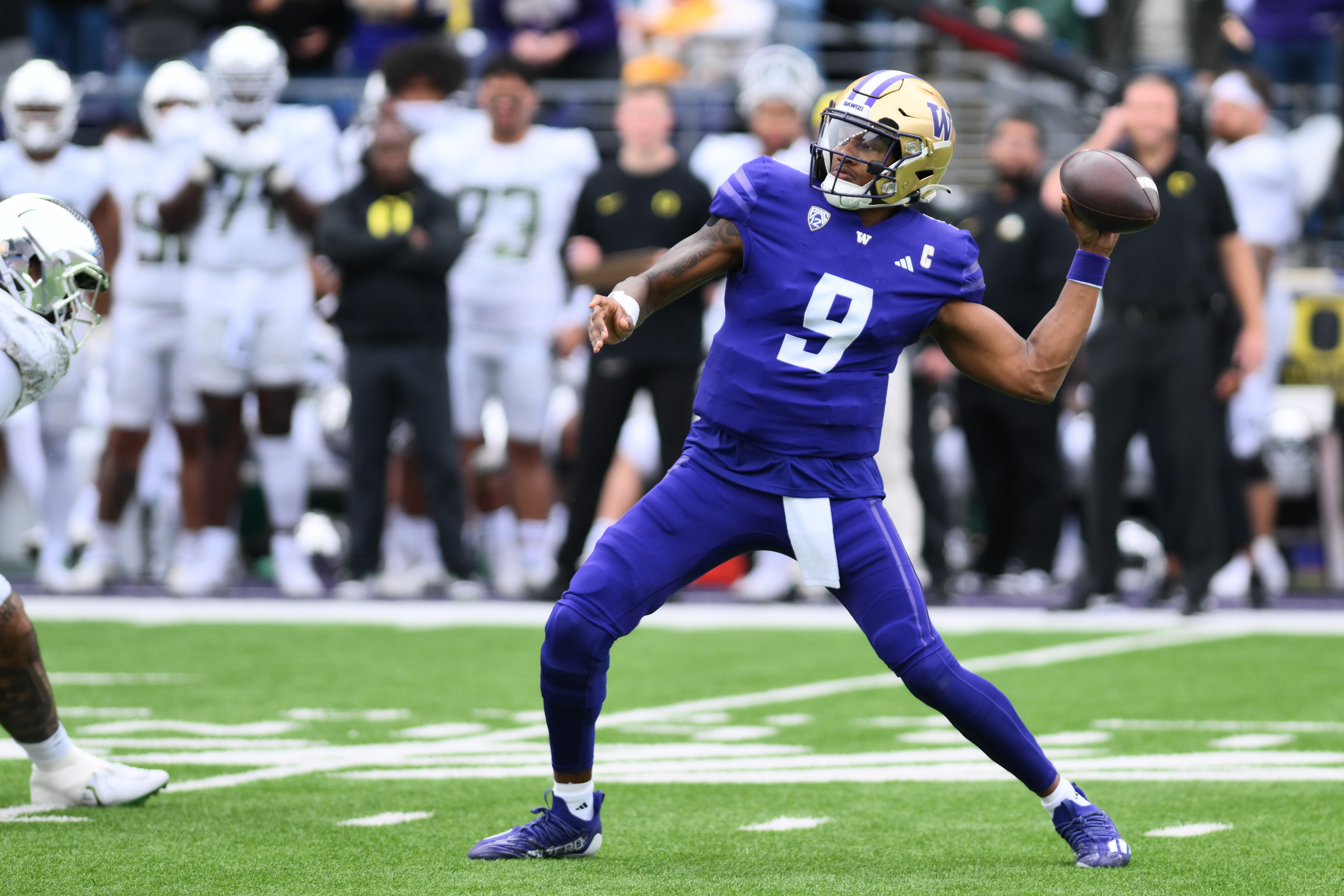Ad Disclosure

Hickey: A revolution is coming to the B1G. Are any of us ready for it?
By Alex Hickey
Published:
There was a common theme on social media Saturday afternoon while Iowa and Wisconsin slugged it out in one of the Big Ten’s most tradition-steeped rivalries at the same time that future conference cohorts Oregon and Washington were racing up and down the field in Seattle.
The gist: how is this the same sport?
I want a three-box screen with Oregon-UW in one, Iowa-Wisconsin in another and a graphic in the third that just says: THIS IS THE SAME SPORT. REALLY.
— Ralph D. Russo (@ralphDrussoAP) October 14, 2023
It’s insane Oregon-Washington and Iowa-Wisconsin were playing the same sport
— The Solid Verbal College Football Podcast (@SolidVerbal) October 14, 2023
If you're watching Oregon vs Washington and Iowa vs Wisconsin… it's hard to believe this is the same sport.
Live Totals:
🔸 Oregon/Washington – O/U 77.5
🔸 Iowa/Wisconsin – O/U 25.5 pic.twitter.com/1fW4LuXl2H— Covers (@Covers) October 14, 2023
The Iowa-Wisconsin game finished with 21 total points and a single touchdown. The offenses combined for 569 total yards and 27 first downs. There were 18 punts. And the Hawkeyes won 15-6 despite finishing with 37 passing yards.
At the same time that was happening, Oregon and Washington combined for 69 points and a single field goal. There were 956 total yards and 56 first downs. Ironically, that’s the very same 3 digits that Iowa and Wisconsin combined for yardage-wise, but in decidedly different order. There were 5 total punts. And the Huskies won 36-33 despite finishing with 541 yards allowed on defense.
Stylistically, the game cannot be played more differently than we saw in these games that were played at the same time.
But a year from now, nobody’s going to be asking whether they are playing the same sport. Implausibly, all 4 teams are going to be in the same conference. And that raises an even more interesting question.
What on earth will the future of Big Ten football look like?
Which style will prevail?
This is not the Big Ten’s first extreme football makeover.
In the late ’90s and early 2000s, Purdue and Northwestern adopted the spread and reached heights those programs hadn’t seen in decades. But it did not become the conference’s prevailing style.
The conference’s traditional big boys adopted some elements to open up their offenses, to be sure. But mostly they learned how to defend the spread better. Big Ten football retained its identity as a league you still identified with 3 yards and a cloud of dust decades after that style went out of fashion.
Urban Meyer revolutionized Ohio State’s offensive approach when he was hired in 2012, and that evolution continues under successor Ryan Day. An Ohio State quarterback has been named Big Ten quarterback of the year every year since 2016, and Buckeye receivers are worth their weight in gold in the NFL Draft.
Ohio State is the exception rather than the rule. Michigan and Penn State score in bunches but do so in a manner expected of a traditional Big Ten team. They’re aiming to maul you on the way to the end zone.
And then there’s the Big Ten West, where the statistics bear greater resemblance to 1920s football than 2020s football.
After this year, mastering that style will no longer result in a Big Ten championship game appearance. And all 4 B1G newcomers are quite comfortable playing at a breakneck offensive pace.
Will that strength in numbers finally spark a Big Ten offensive revolution? Or will all that high-flying offense crumble in the weekly grind of a full Big Ten schedule?
It will be fascinating to watch that football culture war play out. But in many ways, it feels likely that past will be prologue.
Initially, the newcomers will probably have the same type of success Purdue and Northwestern experienced upon bringing Big Ten offenses into the modern age. Your typical Big Ten defense is not built to stop the well-oiled machines that Washington and Oregon took out of the garage on Saturday.
And why would they be?
Big Ten defensive coordinators would be foolish to use what they might see in January as their blueprint instead of what they face on a weekly basis the rest of the season. But now they’re about to see those offenses more regularly.
Eventually, as they did in the mid-2000s, B1G defenses will catch up to the offensive changes. Quality defensive play is too engrained in the conference DNA, even if that DNA is about to be dramatically altered.
Bad offense, though, is going to be rendered obsolete.
On Saturday, Iowa was 1 of 2 B1G teams to win despite its starting quarterback completing less than 50% of his attempts. The Hawkeyes were also 1 of 3 Big Ten teams to notch a win with a quarterback averaging fewer than 6 yards per attempt.
Those are the type of stats we’re unlikely to see much more of in future wins. Big Ten offenses won’t be scoring 40 points a game on demand, but the West Coast offensive infusion will be enough that you’ll need to be able put 20 on the board if you expect to win.
Iowa-Wisconsin and Oregon-Washington were a vision of college football’s polar extremes on this random October Saturday.
Over the course of the next 5 years or so, I suspect the arranged marriage of those extremes will likely bring both sides of the equation closer to the middle.
Alex Hickey is an award-winning writer who has watched Big Ten sports since it was a numerically accurate description of league membership. Alex has covered college football and basketball since 2008, with stops on the McNeese State, LSU and West Virginia beats before being hired as Saturday Tradition's Big Ten columnist in 2021. He is an Illinois native and 2004 Indiana University graduate.